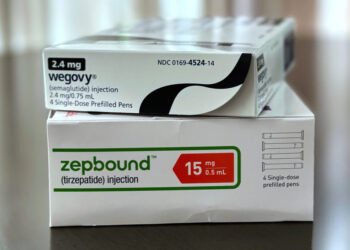In 2005, scientists announced that moss could grow inside of spaceships. The little plants the scientists sent up on NASA Space Shuttle missions grew in a breathtakingly weird shape, a sort of fuzzy spiral, an apparent reaction to the low-gravity environment.
It was not as whimsical an experiment as you might think. As researchers contemplate how humans might someday feed ourselves beyond Earth, it’s anyone’s guess how plants that evolved on Earth, with Earth’s gravity and atmosphere and protection from the radiation of outer space, will handle such strange habitats.
[time-brightcove not-tgx=”true”]
Since that space moss took its journey, many research teams have sent seeds and spores to the International Space Station (ISS) and arranged for plants to be grown there. Now, following in the steps of those researchers, a team publishing Nov. 20 in the journal iScience demonstrates that more than 80% of moss spores left on the outside of the ISS for nine months and brought back to Earth germinated normally. The findings confirm that moss spores, already known to be hardy, handily survive the stresses of near-Earth orbit.
Read More: The Best Years of Your Life Are Probably Still Ahead
This particular moss species, called spreading earthmoss, is often used by scientists in the lab, says Tomomichi Fujita, a professor at Hokkaido University and an author of the new paper. Its spores, each containing everything needed to build a new moss plant, went to space because Fujita and his colleagues were curious how they might handle long-term exposure to those harsh conditions, with an eye to someday growing such mosses on other planets. On Earth, “moss is a pioneering land plant,” he says. When plant life on this planet first moved from the seas to the land, it’s thought that mosses were some of the first to take to the new living situation.
Before the spores took flight, the researchers first checked to see how they handled stresses on Earth. They recorded how many spores germinated after being exposed to extreme heat and cold, to ultraviolet radiation, and to very low pressure, confirming that when compared to other life stages of the moss, spores were more resilient. Then, the spores were kept on the outside of the ISS for nine months, where they were exposed to numerous challenges at once.
Fujita and his colleagues weren’t sure if any spores would make it; each of the challenges on Earth seemed to knock down their viability substantially. But in the end, “[more than] 80% of the spores survived. That was very surprising,” he says. He hopes the results can help advance research about how plants from Earth could someday grow on Mars or the moon.
One factor that spores might face once they leave low-Earth orbit, which this study could not address, is how they handle cosmic ionizing radiation, says Agata Zupanska, a research scientist at the SETI Institute, a nonprofit dedicated to studying the origins of life in the universe. Earth’s magnetic field largely deflects these rays before they can tear into genetic material and cause mutations, and the ISS is low enough that it is fairly protected. But that kind of protection isn’t available in deeper space, and it is a serious concern that crop seeds on their way to another planet might take so much damage that they are no longer viable on arrival, Zupanska says.
Read More: You’ve Heard of FOMO. But Do You Have FOFO?
To address this issue in her own work, Zupanska bombards hardy Antarctic mosses with radiation in a particle accelerator. “The most resistant-to-radiation plant is moss. This is why I got into moss,” she says. (Also, she adds, with a laugh, “moss is cute.” It has surprising charisma for a small green entity.) Her group has sent these bombarded plants up to the ISS to see how low-gravity conditions affect their ability to recover from radiation; results from that experiment have not yet been published.
If mosses—either their spores or whole plants—can weather the trials of space travel, perhaps their strategies could be adapted to aid other plants. And mosses themselves, both Fujita and Zupanska believe, might have a role to play in making other planets hospitable for earthly life. After all, mosses are thought to have helped pump large amounts of oxygen into Earth’s atmosphere more than 400 million years ago.
“It’s a pioneering plant. Here on Earth, even when you have a forest devastated by wildfires, the first plants to creep in and restore the ecosystem are going to be moss,” Zupanska says. Maybe someday there will be cushions of green on red Martian dust, adapting to a new environment and modifying it in turn.
The post Moss Can Survive the Harsh Conditions of Space appeared first on TIME.




